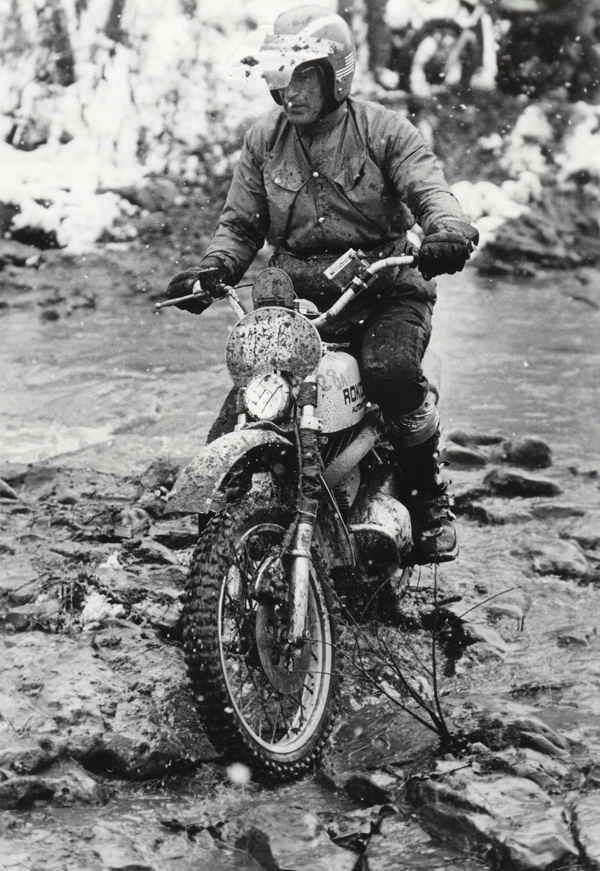The one-story brick building at 5625 Gravois Avenue bears no sign, in fact has nothing to distinguish itself from its commercial neighbors.
Inside, however, is a collection that draws motorcycle connoisseurs from all over the country. The museum includes not only 150-plus vintage motorcycles, but it provides a bit of a history lesson on St. Louis and a look at the larger-than-life career of motorcycle and car dealer Dave Mungenast.
Mungenast, who died in September at age 71 of brain cancer, started the museum — Dave Mungenast's Classic Motorcycles Museum — in 1999 with some of his own motorcycles. Mungenast, whose name is mainly associated with cars because of his four automobile dealerships, was actually in love with motorcycles, from the time he bought his first motorcycle, a 1946 Indian Chief, at age 16. He wrecked it on the way home from buying it.
Mark Mederski, executive director of the Motorcycle Hall of Fame Museum in Pickerington, Ohio, said the Mungenast museum was well-known nationally among motorcycle enthusiasts, mainly because they knew or knew of Mungenast, who competed on motorcycles internationally and performed as a movie motorcycle stuntman for years.
But, Mederski acknowledged, the museum's "not broadly enough known (outside the motorcycle community)."
Dave Larsen, 61, of Oakville, was Mungenast's first employee — at a Honda motorcycle dealership in 1965. Larsen is now curator of the museum, which is owned by the Mungenast family.
Larsen calls the museum "Dave's gift to the community that has supported all his businesses for the past 42 years."
The museum is in the building that first housed Mungenast's second venture — a Toyota dealership begun in 1966. Mungenast sold the franchise 13 years later.
About 80 percent of the museum's motorcycles belonged to Mungenast; the rest have been donated or lent to the museum.
They represent about 30 brands from more than 10 countries:
There are Ossas from Spain, a Zundapp from Germany, and Hodakas and of course Hondas from Japan. The Indian and Yankee bikes are American.
The motorcycles don't see much pavement, said Dave Burst, of Webster Groves, assistant museum curator and a former parts manager for Mungenast dealerships. Their main function now is display.
Bob Rothenberg, 65, of south St. Louis, has seven bikes on display at the museum. He said the museum is notable because of its international flavor. Rothenberg's motorcycles include several Triumphs and a 1970 JAWA speedway bike, a rare European motorcycle that has no brakes and runs on alcohol.
He is at the museum every week.
"It's kind of a really great little secret for St. Louis," Rothenberg said. "I wish more people would take advantage of it."
The displays change month-to-month to keep things fresh for returning visitors. This month the front gallery hosts a collection of British bikes.
St. Louis history also is abundant here.
There are pictures of the St. Louis Police Department's motorcycle squad from years ago and photos that capture local racers in action.
And if you come at the right time, you might just bump into some St. Louis motorcycle legends.
"We get a lot of interesting folks," Larsen said.
They include Richard Willey of south St. Louis County, who set a record in 1987 for riding his motorcycle around the perimeter of Australia in 10 days, seven hours and 54 minutes. Dick O'Mara, of south St. Louis County, who set a record speed at Bonneville Salt Flats in Utah, also often stops by.
Evidence of Mungenast's foray into Hollywood is also available.
Mungenast, who was a stuntman in several movies, including "Cannonball Run," starring Burt Reynolds and Farrah Fawcett, had bought two motorcycles from the collection of actor and motorcycle enthusiast Steve McQueen.
One is a 1942 Indian Military 741, a motorcycle used in World War II. The other is a 1913 Excelsior. One of the most frequently-asked questions by visitors is if the Indian is the motorcycle that McQueen used in "The Great Escape."
It wasn't, Larsen said. The cycle in the movie was actually a British-made Triumph made to look like a German motorcycle.
Admission to the museum is free. Its budget is buttressed by the Mungenast family.
"(The family) knew this was their husband's and father's dream and have been very supportive," Larsen said.

